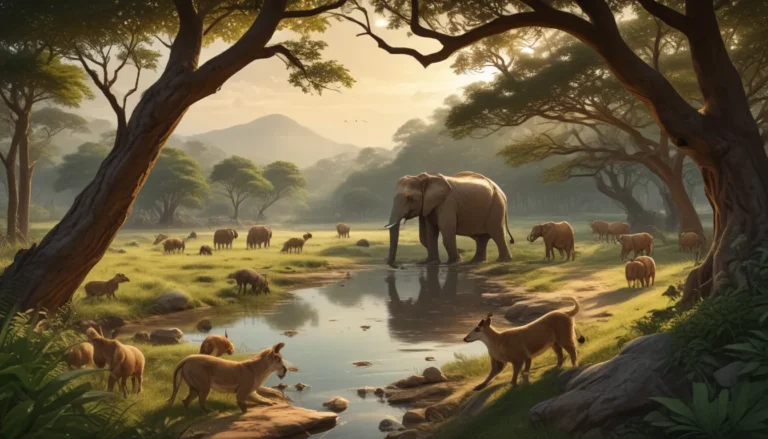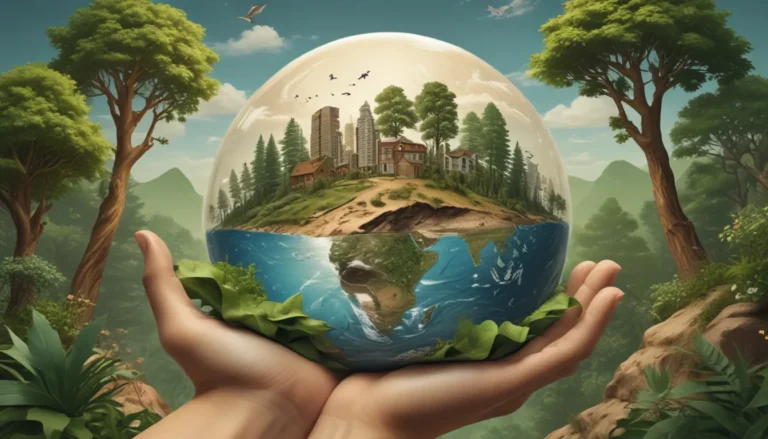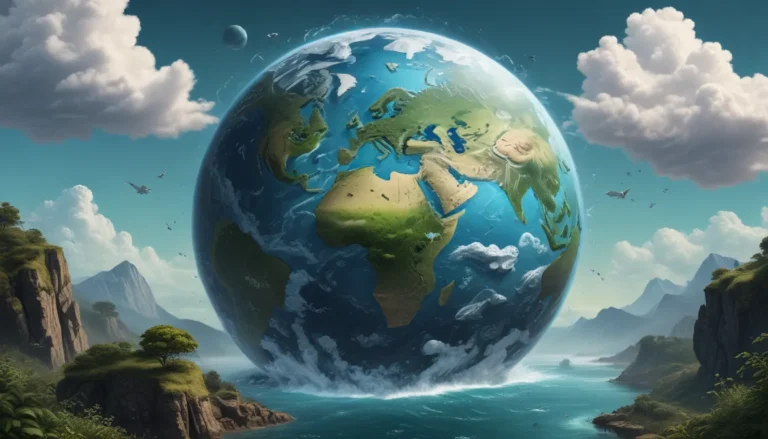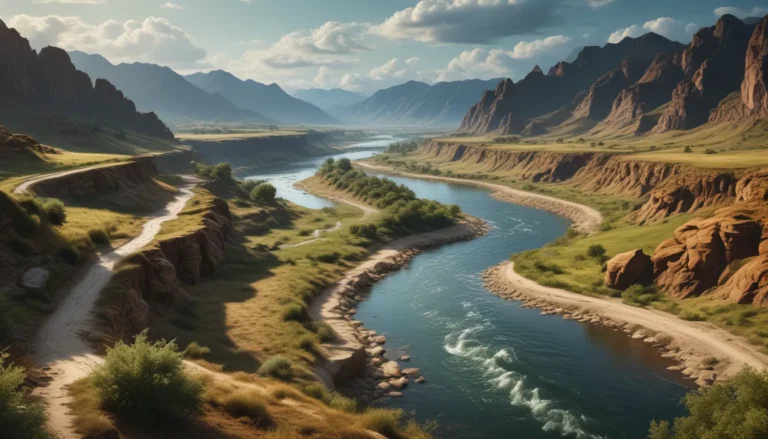A Note About Images: The images used in our articles are for illustration purposes only and may not exactly match the content. They are meant to engage readers, but the text should be relied upon for accurate information.
In today’s world where environmental issues are at the forefront of global discussions, biodiversity conservation stands as a critical pillar in the preservation of our planet’s natural resources and ecosystems. The term “biodiversity” encompasses the incredible variety of life on Earth, including a multitude of species, ecosystems, and genetic diversity. Not only is biodiversity essential for the health of our planet, but it also plays a crucial role in ensuring the survival and well-being of human beings.
Unveiling the Marvels of Biodiversity Conservation
Let’s embark on a fascinating exploration of the world of biodiversity conservation and unravel some truly remarkable facts. From the astounding number of species inhabiting our planet to the innovative conservation practices implemented worldwide, these facts will illuminate the significance of safeguarding and cherishing biodiversity.
So, put on your nature-loving hat, and let’s immerse ourselves in the awe-inspiring realm of biodiversity conservation!
The Vital Importance of Biodiversity Conservation
Biodiversity conservation is not just a noble endeavor; it is a fundamental necessity for preserving the incredible tapestry of life on our planet. It plays a pivotal role in maintaining ecosystem services, supporting sustainable development, and shielding us from the devastating effects of biodiversity loss. Rainforests and coral reefs, known as biodiversity hotspots, are particularly crucial and demand our protection. Indigenous communities also play a pivotal role in conservation efforts, emphasizing the shared responsibility we all have in safeguarding biodiversity for future generations.
Unveiling the Consequences of Biodiversity Loss
The repercussions of biodiversity loss reverberate far and wide, disrupting ecological balance, compromising food security, and exacerbating climate change. It is imperative that we recognize the interconnectedness of all life forms and the profound impact that the loss of biodiversity can have on our planet and its inhabitants.
Sustaining Ecosystem Services Through Biodiversity Conservation
By safeguarding ecosystems and their biodiversity, we ensure the continued provision of essential services such as pollination, water purification, and soil fertility. It is vital to acknowledge the intricate web of life that sustains us and to take proactive measures to conserve and protect these invaluable services.
Protecting Biodiversity Hotspots
Tropical rainforests and coral reefs stand out as biodiversity hotspots, teeming with a rich diversity of plants, animals, and microorganisms. These ecosystems are vital reservoirs of biodiversity and demand our unwavering attention and care to ensure their preservation for future generations.
Promoting Marine Biodiversity through Protected Areas
Establishing marine protected areas serves as a critical strategy for safeguarding marine biodiversity and facilitating the recovery of threatened species and ecosystems. It is imperative that we extend our conservation efforts to the vast and diverse realm of our oceans to ensure the sustainability of marine life.
Nurturing the Health of Wetlands
Wetlands play an indispensable role in supporting biodiversity by providing habitats for numerous species, acting as natural water filters, and safeguarding against floods and erosion. Recognizing the invaluable services rendered by wetlands underscores the importance of conserving these vital ecosystems.
Fostering Sustainable Development through Biodiversity Conservation
Preserving biodiversity not only ensures the sustainable utilization of resources but also fosters long-term economic and social well-being. By embracing conservation practices that prioritize the protection of biodiversity, we pave the way for a harmonious coexistence between humans and nature.
Confronting the Threat of Invasive Species
The encroachment of non-native species poses a significant threat to biodiversity by outcompeting native species, disrupting ecosystems, and precipitating biodiversity loss. It is imperative that we address the challenges posed by invasive species through proactive management and conservation efforts.
Embracing Holistic Approaches to Biodiversity Conservation
Biodiversity conservation transcends traditional protected areas and encompasses a spectrum of efforts, including sustainable agriculture, responsible forestry, and urban planning. Embracing holistic approaches to conservation empowers us to protect biodiversity on multiple fronts and ensure the sustainability of our ecosystems.
Empowering Indigenous Stewardship of Biodiversity
Indigenous communities, with their profound traditional knowledge and practices, serve as key stewards of biodiversity and champions of sustainable resource management. Their invaluable contributions to biodiversity conservation underscore the importance of inclusive and collaborative conservation initiatives that respect and honor indigenous wisdom.
Unveiling the Economic Consequences of Biodiversity Loss
The decline of biodiversity can have far-reaching economic implications, impacting industries such as agriculture, tourism, and pharmaceuticals. Recognizing the economic value of biodiversity underscores the need for concerted efforts to conserve and protect our planet’s rich biodiversity.
Safeguarding Endangered Species through Protected Areas
Designated protected areas serve as sanctuaries for endangered species, offering refuge for them to breed, thrive, and recover. Upholding the integrity of these protected areas is essential in preserving the delicate balance of ecosystems and safeguarding the future of endangered species.
Fostering Global Cooperation for Biodiversity Conservation
Collaborative international efforts are imperative in combating biodiversity loss and safeguarding shared resources. The collective responsibility we bear for the preservation of biodiversity calls for coordinated action and mutual support among nations to secure a sustainable future for all life forms on Earth.
Nourishing Food Security through Biodiversity
A diverse array of crops and livestock species underpins resilient agricultural systems and ensures food availability for future generations. Recognizing the pivotal role of biodiversity in sustaining food security highlights the urgency of preserving and enhancing our planet’s agricultural diversity.
Harnessing Biodiversity for Climate Change Mitigation
Healthy ecosystems play a vital role in mitigating climate change by absorbing carbon dioxide, regulating temperatures, and contributing to climate change adaptation and mitigation. By nurturing biodiversity, we fortify the natural mechanisms that can help alleviate the impacts of climate change on our planet.
Combating Wildlife Trafficking to Protect Biodiversity
The illegal trade of wildlife products poses a grave threat to biodiversity, jeopardizing the survival of many species and fueling organized crime networks. Confronting wildlife trafficking demands concerted efforts to address this illicit trade and protect the diverse array of species that enrich our planet.
Maximizing Conservation Impact through Biodiversity Hotspots
By focusing our conservation efforts on biodiversity hotspots, areas rich in biodiversity, we can maximize our conservation impact and efficiently allocate resources to safeguard the most critical ecosystems. Prioritizing biodiversity hotspots underscores the strategic approach needed to preserve the wealth of life forms on our planet.
Cultivating Innovation through Biodiversity Exploration
Exploring the intricate adaptations and interactions within ecosystems not only deepens our understanding of biodiversity but also inspires new solutions and technologies. Biodiversity serves as a wellspring of innovation, offering valuable insights and lessons that can guide us in addressing contemporary challenges and advancing sustainable development.
Embracing Our Shared Responsibility for Biodiversity Conservation
From individual actions to governmental policies, every stakeholder has a role to play in preserving biodiversity for future generations. Recognizing our shared responsibility for biodiversity conservation empowers us to take collective action and effect meaningful change in safeguarding our planet’s rich biodiversity.
Conclusion: A Call to Action for Biodiversity Conservation
In conclusion, biodiversity conservation stands as a beacon of hope and resilience in our quest for a sustainable future. The intricate web of life that surrounds us underscores the interconnectedness of all living beings and the imperative of cherishing and protecting our planet’s rich biodiversity. By honoring our commitment to biodiversity conservation and working together in harmony with nature, we can forge a path towards a brighter tomorrow where biodiversity thrives, and the beauty of our natural world endures.
FAQs: Exploring Common Questions About Biodiversity Conservation
-
What is biodiversity conservation?
Biodiversity conservation entails the protection, management, and restoration of biodiversity to ensure the continued existence and functioning of ecosystems. It encompasses efforts to conserve habitats, species, and genetic diversity, while promoting sustainable practices to minimize the impact on natural resources. -
Why is biodiversity conservation important?
Biodiversity conservation plays a crucial role in maintaining ecological balance, supporting essential ecosystem services, and providing valuable resources like food, medicine, and clean water. It enhances the resilience of ecosystems, making them more adaptable to changes and less susceptible to disruptions. -
How can individuals contribute to biodiversity conservation?
Individuals can contribute to biodiversity conservation by supporting conservation organizations, adopting sustainable practices in their daily lives, and raising awareness about the importance of biodiversity through education and advocacy. Every small action makes a difference in protecting our planet’s biodiversity. -
What are the threats to biodiversity?
Habitat loss, pollution, climate change, invasive species, and overexploitation of natural resources are some of the key threats to biodiversity. These factors can lead to the extinction of species, disruption of ecosystems, and loss of genetic diversity, highlighting the urgent need for conservation efforts. -
How can biodiversity conservation benefit humans?
Biodiversity conservation benefits humans in myriad ways, providing essential resources such as food, medicine, and materials for shelter. It also offers recreational and aesthetic value, contributes to cultural heritage, and plays a crucial role in regulating climate and maintaining a healthy environment, underscoring its significance in our lives.
Harnessing the Power of Biodiversity Conservation
Our journey through the realm of biodiversity conservation has illuminated the profound significance of protecting and preserving the diversity of life on our planet. By embracing collaborative efforts, fostering innovation, and honoring our shared responsibility, we can pave the way for a sustainable future where biodiversity thrives, and the beauty of our natural world endures. Let us unite in our commitment to biodiversity conservation and embark on a journey towards a brighter tomorrow for all life forms on Earth.






